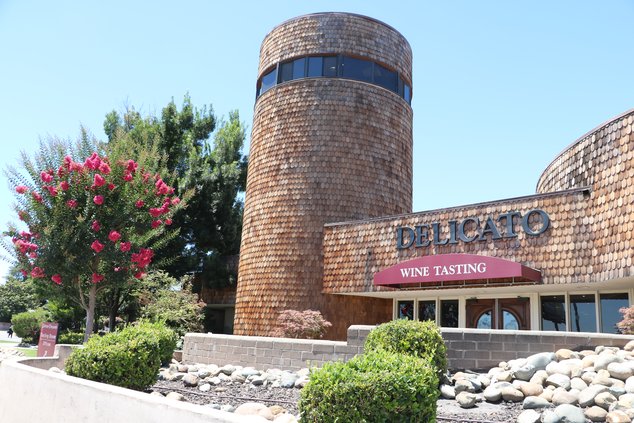I have friends in San Francisco that practically turn up their noses dismissing the idea that great tasting wine comes from grapes grown in San Joaquin County.
Last December, I dropped by on a trip to The City with a bottle of Gnarly Head Cabernet Sauvignon.
They were familiar with Gnarly Head. They said they liked the bottle I brought them. I’ll have to take their word for it as I don’t drink wine. But when I told them where the winery is that produces Gnarly Head I realized they weren’t really wine snobs given they had never inspected the back label on the backside of the bottle that reads “vinted & bottled by Gnarly Head Wines, Manteca and Napa.” They simply had a deep-seated bias about the San Joaquin Valley in general.
About the same time I met a couple that had moved to Manteca from San Jose while at Bass Pro Shops. We got engaged in conversation and they asked how good the wineries were in the foothills such as Ironstone Vineyards. When I mentioned Manteca had its own winery complete with a wine tasting room they were a bit taken a back. They knew about the Lodi Wine Country but they couldn’t believe Manteca had a winery. That’s understandable if you don’t stray far from the freeway umbilical cord for connects you to the Bay Area via the Altamont Pass and have not really explored San Joaquin County or even taken a drive into the Manteca countryside where vineyards, fields of pumpkins, dairies, and walnut orchards are intermixed with what seems to be endless almond orchards.
One of the best kept secrets in the United States — and apparently for most of San Joaquin County’s 745,424 residents — is that when it comes to growing wine grapes, there is nowhere in California — or the United States — that tops San Joaquin County.
Not Napa County, not Sonoma County, not Monterey County and not even the entire State of Washington or even all of Oregon.
If San Joaquin County were a state, it would be second to only California when it comes to bearing wine grape acreage. Based on 2017 United States Department of Agriculture wine grape acreage reports, San Joaquin had 69,899 acres or roughly a seventh of California’s 460,438 acres of wine grape production. That is bigger than the No. 2 state of Washington at 55,445 acres, the No. 3 state of New York at 35,000 acres and the No. 4 state of Oregon at 23,000 acres.
The next closest county to San Joaquin is Sonoma County at 57,449 acres followed by Monterey County at 44,361 acres. It even tops the world famous fabled Napa County with 43,279 acres.
When you toss all grapes into the equation — table, raisin, and wine — San Joaquin County’s acreage jumps to 98,100 acres or 12 percent of the Golden State total.
Two of the nation’s Top 10 wineries are in San Joaquin County — Manteca’s Delicato Vineyards and The Wine Group in Ripon. Stanislaus County that grows a 10th of the wine grapes San Joaquin County does also has two Top 10 wineries with Gallo and Bronco Wines. Gallo is the nation’s largest while among the four only Delicato has a wine tasting room. It is two miles north of Manteca at Highway 99 and French Camp Road. Delicato features daily wine tasting from 9 a.m. to 5 p.m. with the tasting room closing at 5:30 p.m.
Keep in mind a lot of grapes grown in San Joaquin County make their way to wineries throughout the state including those in the Napa Valley.
San Joaquin is not a tourist Mecca with $300 spa treatments and $250 mud baths and top-tier dining although Ernie’s Fine Dining and Spirits in Manteca is impressive enough it draws clientele from San Francisco while Lodi’s wineries can hold their own for wine tasting. Wines & Roses in Lodi is a comparably affordable getaway with elegant rooms, top-notch space, fine food and wines plus it is next door to the Lodi Wine & Visitor Center. Altogether San Joaquin County has nearly 80 wineries with the vast majority in the Lodi area.
While downtown Lodi isn’t exactly Napa it has a quaint collection of shops, restaurants, and entertainment venues complete with al fresco dining accented with charming streetscape that isn’t quite Pleasanton but definitely can give Livermore more than a run for its money. And like Livermore that features wines from the Livermore Valley, there is a wine tasting spot in downtown Lodi that draws from the surrounding countryside.
It’s safe to say if Clearance Clearwater Revival broke down in Lodi today they likely would have sung a different tune in recording the song “Lodi” with its anti-chamber of commerce refrain “Oh Lord, stuck in Lodi again.”
While we are on the subject of the $2.5 billion worth of crops that come from the 58.2 percent of San Joaquin County’s 1,391 square miles that constitute farmland, this might be a good time to note if San Joaquin County were its own state it would rank as the 35th most productive farm state in the nation. California at almost $50 billion grows more than 400 commodities that account for 13 percent of this nation’s food production. The Golden State grows over a third of the nation’s vegetables as well as two thirds of the nation’s fruit and nuts.
And here’s another surprise: San Joaquin is the top producing county in California for seven commodities. They are lima beans (93% of the state’s crop), pumpkins (88%), chicken eggs (59%), watermelons (39%), grain corn (34%), safflower (26%) and walnuts (18%).
The county’s almond production doesn’t even make the top five.
In terms of the county’s $2.5 billion worth of crop production grapes are at the top at $395.5 million followed by milk at $387.3 million, almonds at $362 million, walnuts at $317 million, and cherries at $184 million.
To contact Dennis Wyatt, email dwyatt@mantecabulletin.com






